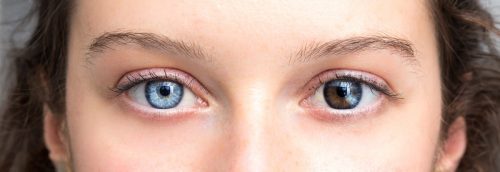It’s that time of the year again when everywhere you turn you catch a glance of a witch or a toothy jack-o-lantern. Focus sat down with Mass. Eye and Ear eye specialists Michael Lin, MD, Suzanne Freitag, MD and Peggy Chang, MD to address (and dispel) three common spooky myths about our eyes.
-
Sneezing with your eyes open will make your eyeballs pop out.
A popular internet search, one vision expert dispelled our childhood fears that you better not try to sneeze with your eyes open:
 “Sneezing with your eyes open will not make your eyeballs pop out of your head,” said Dr. Michael Lin, glaucoma specialist. He explains that despite misconceptions, the eyelids are not the only tissues that hold the eyes in place. The eyes are secured in position by many other attachments, including six muscles that help you look in different directions. “The benefit of closing your eyes when you sneeze is that it may protect them from the debris released by a sneeze,” he said.
“Sneezing with your eyes open will not make your eyeballs pop out of your head,” said Dr. Michael Lin, glaucoma specialist. He explains that despite misconceptions, the eyelids are not the only tissues that hold the eyes in place. The eyes are secured in position by many other attachments, including six muscles that help you look in different directions. “The benefit of closing your eyes when you sneeze is that it may protect them from the debris released by a sneeze,” he said.
-
Eyelid twitching brings omens.
Different cultures have different beliefs about eyelid twitching, and whether this might be a sign of a good or bad omen, or something more macabre to come. Dr. Suzanne Freitag, director of Eye Plastic Surgery Service, shared with Focus that eyelid twitching is not in fact a sign of doom, but rather could be caused by one of three different conditions:
- Myokymia is a benign condition that results in twitching of the outer corner of the eyelid. It’s a temporary condition often brought on by stress or over consumption of stimulants, such as caffeine. The good news is that it goes away spontaneously.
- Blepharospasm results in involuntary and uncontrollable eyelid fluttering, frequent blinking and forceful eyelid closure of both the right and left eyelids. Occasionally, it impacts the lower facial muscles and in extreme cases, even the vocal cords. Blepharospasm worsens when your eyes are exposed to bright lights and can also be brought on by stress. The cause of this lifelong condition is unknown, and treatment includes botulinum toxin injections every three months to paralyze the muscles that close the eyelids.
- Hemifacial spasm results in involuntary spasms of one side of the face – including the eyelids, cheeks and mouth. The cause is most often unknown, but rarely an enlarged blood vessel or tumor near the brainstem may be the underlying issue.
-
Witch’s Eye or Ghost Eye?
 There are various myths worldwide as to why some people have irises of different colors, from being able to see into the afterlife or possessing a “witch’s eye.” Dr. Peggy Chang, clinical director of Ophthalmology at Mass. Eye and Ear, Longwood, explained to Focus why some people have different colored eyes.
There are various myths worldwide as to why some people have irises of different colors, from being able to see into the afterlife or possessing a “witch’s eye.” Dr. Peggy Chang, clinical director of Ophthalmology at Mass. Eye and Ear, Longwood, explained to Focus why some people have different colored eyes.
This condition, known as heterochromia, may be present at birth, or result from birth trauma. It may also be acquired from a number of causes, including chronic eye inflammation, trauma, or certain eye drops used to treat glaucoma.
Most congenital heterochromia is benign, hereditary, and unrelated to other conditions. Depending on the cause, many cases of acquired heterochromia cannot be reversed, for example the iris darkening from glaucoma medications is thought to be irreversible. Heterochromia doesn’t usually affect vision and alone is not the cause of vision loss.
The eye specialists at Mass. Eye and Ear remind you to consult your doctor if you’re experiencing any vision issues. To make an appointment with one of our physicians, call 617-573-3202 or request an appointment online.